Content
Eating ornamental garlic
Today there are many plants that at the same time are able to amaze with their beauty and excellent taste... Ornamental garlic is one of them.
What is ornamental garlic and the purpose of its cultivation
Decorative garlic is very similar to ordinary garlic, only it differs from it in its incredibly beautiful inflorescence. Depending on the species, it throws out up to 12 leaves and has excellent inflorescences, which are full of a variety of shades.
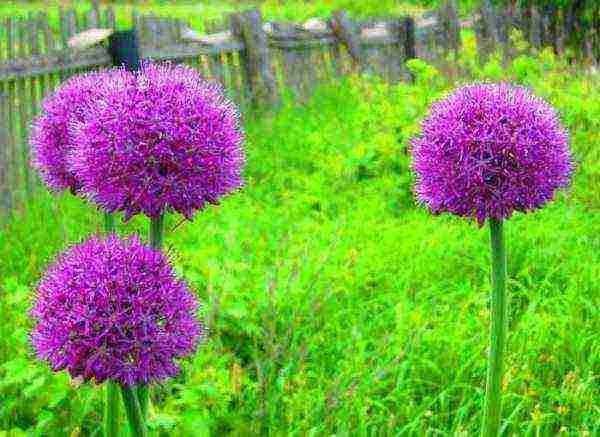
However, the bulb of an ornamental plant is very small, its diameter is usually less than 5 mm and is brown or gray in color.
This plant is both decorated with plots and eaten.
Most popular varieties
There are about 500 species of ornamental flowering garlic in the world. The most famous among which are:
- Neapolitan;
- Moli;
- Daffodil.
Neapolitan
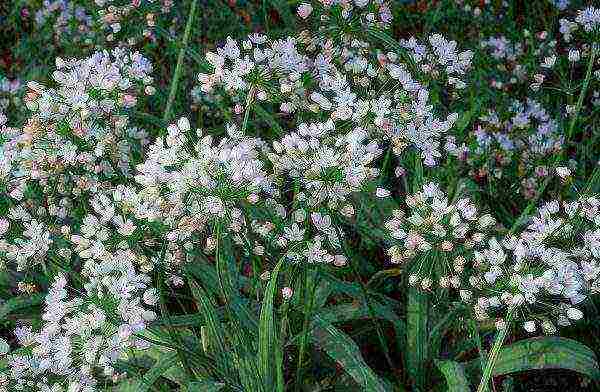
It has white unusually beautiful inflorescence of bell-shaped flowers... It looks great in tall vases and on sunny lawns. This variety blooms in June.
Moths
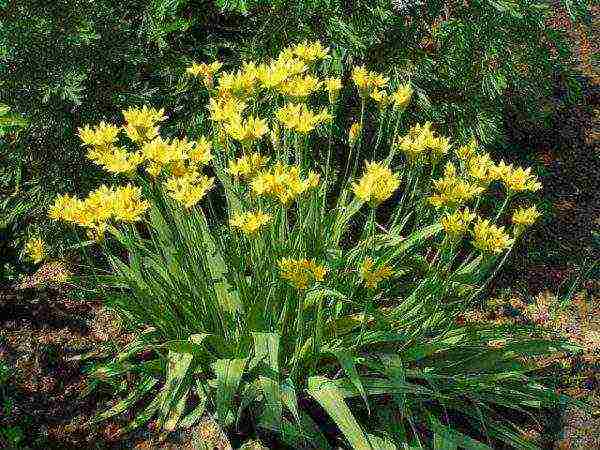
Often also called the golden onion. It is relatively short, reaching 25 cm, and the diameter of the inflorescence becomes 6 cm... The plant blooms in late June or July. Its peculiarity is that it can grow both in the sun and in partial shade.
Daffodil
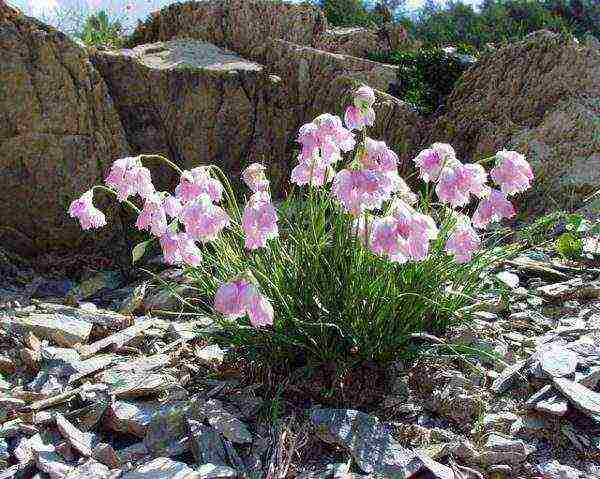
It does not live up to its name at all, since its flowers have a wine-red hue. This variety is distinguished by its originality. He is also short, only 25 cm.
Landing rules, when and where
For planting decorative garlic, choose a sunny and dry place, since it does not tolerate excessive moisture and does not grow well in the shade.Once in 3 the years change the place of its landing.
If seeds are used for planting, then they must be planted in the soil at least one and a half months before the onset of frost.
For sowing seeds in the ground, pits are made no deeper than 5 cm.They are covered with coarse sand, the thickness of the ball of which does not exceed 1.5 cm.
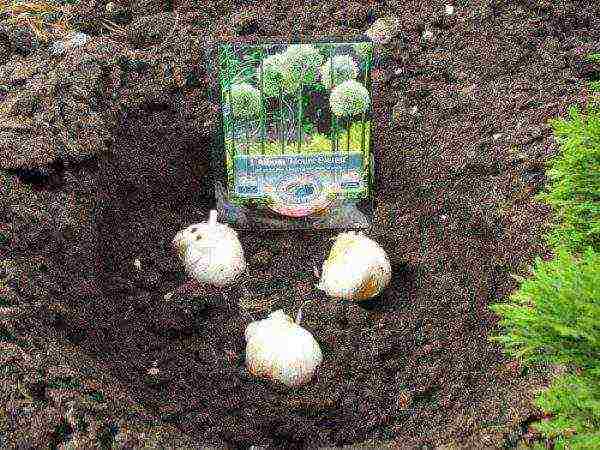
If the garlic is propagated using slices, then the depth of the fossa should be no more than 2-3 bulbs in diameter. When planting the lobules, you can put and, moistened newspapers in which holes are made, in the hole. These newspapers will keep weeds from sprouting in the spring.
Ornamental garlic care - how to water and feed
Decorative garlic is quite picky to care for. He does not need frequent watering... But you should also not allow long-term drying of the soil. In general, the plant is watered about 3 times per season. This plant just feels great at a temperature of 22-25 degrees.
After watering or rain, the soil should be loosened.
The garlic will grow large if the arrows are cut off, otherwise it will be small and not so beautiful.
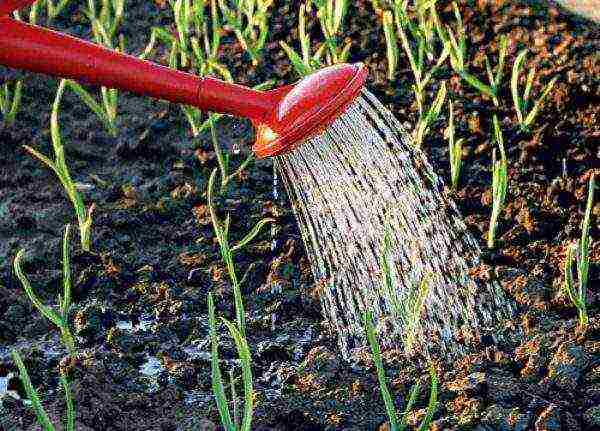
This plant also needs feeding.Fertilize the soil 2 weeks before planting. To do this, take:
- wood ash - 400 g;
- superphosphate - 300 g;
- humus - 10 kg;
- magnesium sulfate - 300 g.
Such a volume is brought in on the basis of 1 sq. m. of land.
After planting, the seedlings are sprinkled with a layer of humus or peat, which will serve as fertilizer and protect the crop from cold and drying out.
Diseases and pests
Ornamental garlic, like all plants, is susceptible to various diseases, and also some pests do not mind eating them. The most common of them include:
- neck rot;
- downy mildew;
- mole;
- root mite;
- onion fly.
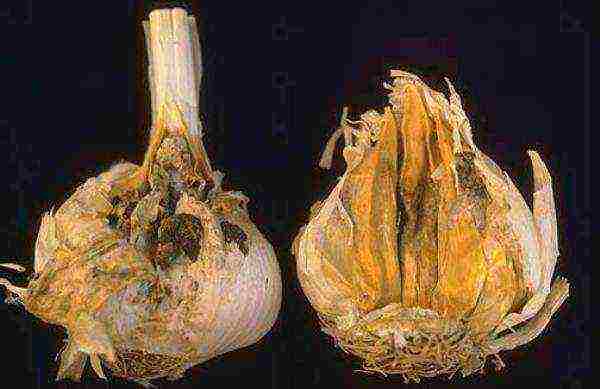
Cervical rot Is a disease that manifests itself during storage of the bulbs. They become soft and watery, and then dry out abruptly. To avoid such troubles, the bulbs must be thoroughly dried in the sun before storing them.

As for downy mildew, then the cause of its appearance is mushrooms that like damp, wet weather. When affected by these fungi, plant growth slows down, pale green spots appear, which then turn yellow and the plant dies over time.
To prevent the appearance of downy mildew, you must:
- dry the heads well at 40 degrees temperature;
- plant it in a sunny, dry area;
- remove weeds;
- change the landing site regularly every 3 years.
When pests appear such as root mite, moth or onion fly, the plant is treated with 2% chlorophos. Ash, peat and tobacco dust will also get rid of them.
- Damage to ornamental garlic by a root onion mite
- Signs of onion fly damage
- Garlic damaged by onion moth
Application and combination with other plants
Decorative garlic has found its application:
- in cooking;
- in landscape design;
- as a disinfectant.
Arrows of this type can fully replace its slicestherefore they are often used in the preparation of the most exquisite dishes.
Thanks to its beautiful spherical flowers, this plant is not inferior in its beauty to any ordinary flower. Now it is very fashionable to have such allaria in your summer cottage - onion gardens. The flower beds look especially beautiful, on which about 5 varieties of this plant grow nearby.... However, it should be remembered that after flowering, the leaves die off and, so that the site does not lose its presentable appearance, various flowers are planted next to the garlic. They will hide these withered leaves. Plants that bloom in early summer will look just great next to it. The most suitable option are hydrangeas, peonies, delphiniums, irises and others.
- Decoration of park areas
- Giant decorative garlic
- Ornamental garlic in a garden bed
- Ornamental garlic is widely used in landscape design
Dried buds of this garlic will serve as an excellent element of winter bouquets.
You can also prepare a solution from decorative garlic, which will be a great helper in the fight against a variety of garden pests.
If you dream to please your stomach with delicious food, and your eyes are an incredibly beautiful sight, then decorative garlic is exactly the plant that should be planted on your site... One has only to decide on the varieties, and without much effort you will get an incredible view on your summer cottage.


